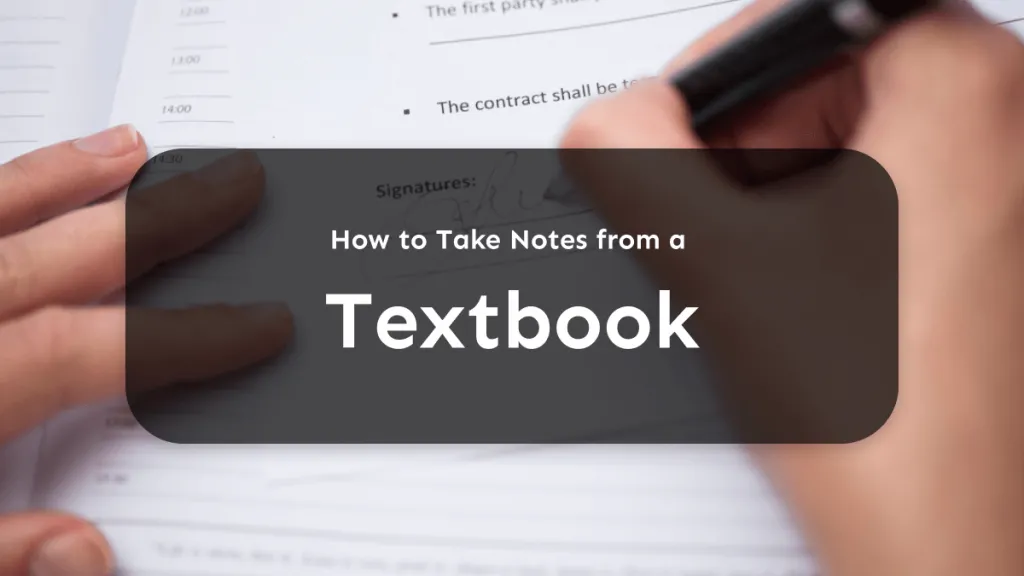Handwriting is quite an art! Whether you want to improve your note-taking skills or simply feel like your handwriting is in dire need of improvement, we’ve got you. More than a simple practical skill, handwriting is a form of self-expression. So, if you’re wondering how to improve handwriting, we bring you 8 simple steps that will help. But first, let’s answer some of your common questions about handwriting.
Part 1. Why Is My Handwriting So Poor?
Well, there are many different reasons some people struggle with bad handwriting. The most common one is a lack of practice. Like any other skill, handwriting requires practice and nowadays, we spend more time typing than writing by hand.
Another reason why your handwriting is poor could be improper grip or posture. The way you hold your pen and sit down will affect your handwriting. We recommend you avoid holding the pen too tightly or too far from the tip. Also, avoid resting your wrist on the paper.
A lack of fine motor skills and coordination between the arm, hand, and fingers can also explain poor handwriting. A lack of focus while writing by hand can also lead to messy handwriting. Additionally, writing too quickly will make your handwriting sloppy.
Part 2. Is It Too Late to Fix My Handwriting?
No, it’s not too late to fix your handwriting. It’s never too late for anyone to improve handwriting, so don’t worry. It just requires practice, determination, and a lot of patience. It will also require time and effort, but it will be worth it.
Writing by hand is a motor skill and it requires muscle memory. So, the more you practice, the more your handwriting will improve. In other words, practicing your handwriting is the key to success. Later in the article, we will share effective tips to move the process along nicely, so keep reading.
Part 3. How Long Does It Take to Improve Handwriting?
“How long does it take to improve handwriting?” will depend on a variety of things. Such as your current level of proficiency, how much and how often you practice, the amount of effort you put into it, and the goals you want to achieve.
We can’t say for sure how long it will take you to improve your handwriting. It may be a few weeks, 1 month, 6 months, or more. What we can say is that your handwriting will improve gradually. The more consistent you are, the better. Make a habit of practicing and set realistic goals for yourself.
Part 4. Which Handwriting Is Best for Students?
When you’re thinking about how to improve handwriting, it’s logical to wonder what handwriting style is the best for students. However, there’s no one-size-fits-all answer. Your handwriting style will depend on your preferences and how comfortable you are writing by hand.
What works for one student won’t work for another student. So, your handwriting style is entirely up to you. That said, there are a few factors you should consider when choosing a handwriting style.
You want your handwriting to be neat and legible. It shouldn’t be too big or too small, and you should be able to write quickly if necessary while maintaining consistency. Moreover, your handwriting should be comfortable for you. So, don’t choose a grip or posture that feels unnatural or difficult to maintain during long handwriting sessions.
Part 5. How to Improve Your Handwriting in 8 Simple Steps
Now that we’ve answered those common questions, let’s get into the guide on how to improve handwriting. We will break this down into 8 simple steps. Follow them and make a habit of practicing so you can see results. Let’s get into it!
1. Look for Handwriting Samples to Find the Right Style for You
The first thing you should do is look for handwriting samples to find the right style for you. If you want to keep it simple, you can look at print handwriting, cursive handwriting, or a combination of the two.
Now, there are many different styles within each category, so you should take some time to do your research. Each style will have different characteristics; analyze them carefully. Including letter formations, slants, and loops. We recommend you keep it simple, especially if you need to improve your handwriting quickly.
2. Analyze Your Handwriting
Once you’ve chosen one or two handwriting styles that you like and think are right for you, you need to analyze your current handwriting. This way, you’ll see what your strengths and weaknesses are.
Look at the size, legibility, and consistency of your handwriting. Also, consider how comfortable you are when writing by hand and the speed of your handwriting. Then, compare it to the samples you chose. This will allow you to identify the things you need to work on to achieve your ideal handwriting style.
3. Choose the Correct Pen
When you’re sitting down to write by hand, you might not think anything of the pen. How could it make a difference? But it does! Having the right pen will do wonders for the quality of your handwriting and also for your enjoyment.
So, make sure your pen has high-quality and quick-drying ink, choose the right type of tip and thickness, and find a comfortable, ergonomic design. For example, a cushioned grip will reduce hand strain and fatigue. You might need to test a few pens, but you’ll find the one.
4. Pick the Right Handwriting Notebook
Once you’ve found the right pen for you, it’s time to find a handwriting notebook for your practice sessions. It’s important to make sure your pen is compatible with the type of paper in your notebook so the ink doesn’t bleed through the pages.
Moreover, you need to make sure your notebook has high-quality paper that’s smooth, thick, and resistant to bleed-through or feathering. Also, look at the line spacing. If you’re a beginner, the line spacing should be wider so you have more room to work with.
You also need to consider the size of your handwriting notebook and the sturdiness of the materials. You’ll be using it a lot, so make sure it’s easy to carry, not too heavy, and made to last so you don’t have to buy several notebooks in the long run.
5. Create a Handwriting Improvement Plan
Now that you have everything you need, you should create a handwriting improvement plan. UPDF, the versatile note-taking app all students should have, offers the perfect daily planner template you can use for that.
This planner template will allow you to stay organized and you can customize it however you see fit. Schedule your daily handwriting practice and create milestones for your progress.
To use the planner template, just download the file and go to the UPDF app to open it there. Then, you can start customizing it by selecting the fields you want to change. Moreover, you can add additional content by going to the left panel and clicking “Edit PDF” so you can add text and change the font, color, and size.
Windows • macOS • iOS • Android 100% secure

Why Recommend the UPDF?
- It allows you to take notes for reading and research. It provides stickers, shapes, text comments, highlights, drawings, and more features.
- You can convert PDFs to any format and convert scanned PDFs or images to an editable format.
- Protect your PDF files with a password and share them with others via a link, QR code, and email.
- Edit the PDF directly, and add images, text, and links to PDF.
- Present your PDF with a slideshow.
With so many features, you can improve your PDF editing experience for study.
Windows • macOS • iOS • Android 100% secure
6. Stick to Your Plan and Practice Every Day
After you create your handwriting improvement plan, you need to stick with it. If you don’t practice every day and stay consistent, you will have a hard time reaching your handwriting goals.
So, schedule your daily practice at the most convenient times and make it fun for yourself. This is something you should enjoy. That doesn’t mean it won’t be a little difficult at times, but you can and should make it fun for yourself.
7. Check and Analyze Your Handwriting
Checking and analyzing the progress of your handwriting as you go along is key. Why? Because it will help you make better decisions and be more effective with your efforts. We recommend you check your handwriting weekly or bi-weekly.
Look at the progress you’ve made and correct your course if necessary. For example, if you see little improvement, consider increasing your practice time or looking for better handwriting templates to use as a guide.
8. Focus on New Issues and Practice
As you transition into a new handwriting style, new issues will arise. So, keep a regular eye on your progress and take note of your weaknesses so you can address them through your practice.
Don’t practice just for the sake of practicing. Be mindful and focus on one weakness at a time to avoid overwhelm. This is when it’s important to be patient with yourself and remain as consistent as possible.
Final Words
As you can see, this guide on how to improve handwriting is very easy to follow. If you’re consistent and make an effort, you will start seeing changes very soon. Don’t forget to use the UPDF daily planner template to schedule your practice time, create a plan, and stay on track.
Windows • macOS • iOS • Android 100% secure
 UPDF
UPDF
 UPDF for Windows
UPDF for Windows UPDF for Mac
UPDF for Mac UPDF for iPhone/iPad
UPDF for iPhone/iPad UPDF for Android
UPDF for Android UPDF AI Online
UPDF AI Online UPDF Sign
UPDF Sign Read PDF
Read PDF Annotate PDF
Annotate PDF Edit PDF
Edit PDF Convert PDF
Convert PDF Create PDF
Create PDF Compress PDF
Compress PDF Organize PDF
Organize PDF Merge PDF
Merge PDF Split PDF
Split PDF Crop PDF
Crop PDF Delete PDF pages
Delete PDF pages Rotate PDF
Rotate PDF Sign PDF
Sign PDF PDF Form
PDF Form Compare PDFs
Compare PDFs Protect PDF
Protect PDF Print PDF
Print PDF Batch Process
Batch Process OCR
OCR UPDF Cloud
UPDF Cloud About UPDF AI
About UPDF AI UPDF AI Solutions
UPDF AI Solutions FAQ about UPDF AI
FAQ about UPDF AI Summarize PDF
Summarize PDF Translate PDF
Translate PDF Explain PDF
Explain PDF Chat with PDF
Chat with PDF Chat with image
Chat with image PDF to Mind Map
PDF to Mind Map Chat with AI
Chat with AI User Guide
User Guide Tech Spec
Tech Spec Updates
Updates FAQs
FAQs UPDF Tricks
UPDF Tricks Blog
Blog Newsroom
Newsroom UPDF Reviews
UPDF Reviews Download Center
Download Center Contact Us
Contact Us










